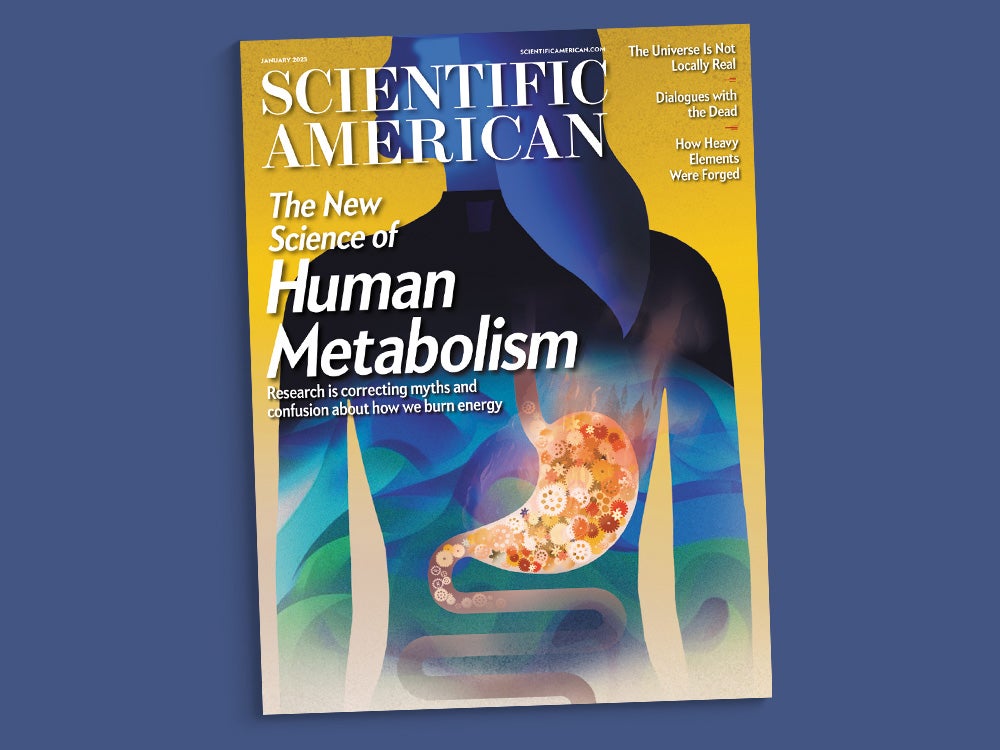
SMOKING AND BONE HEALTH
Claudia Wallis nicely summarizes issues surrounding bone health and calcium metabolism in “A Diet for Better Bones” [The Science of Health]. She mentions the likely deleterious effects of excess alcohol and coffee intake in the article. To this list, I would add cigarettes—in any quantity and at almost any time in life.
A routine part of my practice as a neurosurgeon was the evaluation of patients with osteoporosis and the performance of spinal surgery, including fusion. I rapidly saw that almost all my patients with osteoporosis had smoked, although many of them would initially deny a history of cigarette consumption until specifically asked if they had smoked as a teenager. Even a short history of cigarette use during the prime period for bone growth and ossification—adolescence and early adulthood—was correlated with a significant increase in the risk of osteoporotic fractures during late adulthood.
Similarly the rate of successful spinal surgery—particularly discectomy and fusion—among active smokers was appreciably lower than that for nonsmokers, so I would postpone nonemergent surgery until the patient had been free of cigarette smoke for at least four—and ideally six—weeks. Over the ensuing decades numerous studies have validated my anecdotal observations.
As Wallis notes, vitamin D supplementation is likely of little benefit to most people who wish to avoid osteoporosis. But smoking cessation—or, better yet, never smoking—is certainly of great benefit.
DANIEL SPITZER Piermont, N.Y.
METABOLIC PATH LESS TRAVELED
I enjoyed “The Human Engine,” Herman Pontzer’s article on rigorous experiments that determine the age- and lean-mass-adjusted trends of human metabolism. The box “Measuring Metabolism” shows these data in two graphs, and the large degree of scatter about their respective regression curves leads to even more interesting questions.
Each scatter point represents a unique human being who is most likely not “average.” Can the scatter explain why certain individuals have more difficulty losing weight or why a particular diet might not work for everyone? How much of it is linked to genetics versus environment? Is it ethical to make health recommendations based on a sample mean when those off the regression curve might be harmed? Furthermore, new cancer therapies tailor treatments to an individual’s genetics. Are such considerations being applied to studies of diet and metabolism?
MARK G. KUZYK Regents Professor of Physics, Washington State University
I was surprised that Pontzer’s article about human metabolism made no mention of the gut microbiota. Each of us coexists with a complex gut ecosystem that contains more organisms than there are cells in our body. Recent discoveries have made it clear that the gut microbiota influences many aspects of our physiology, from immune function to mental health, and alterations to it induced by widespread use of antibiotics and highly processed foods most likely play a critical role in explaining the epidemic of obesity. The gut microbiota is also the filter through which all of our food is processed, linking it inextricably with human metabolism. It is not just “us” who use the calories we consume, making the “calories in, calories out” formulation Pontzer cites incomplete.
IRA S. NASH Scarsdale, N.Y.
PONTZER REPLIES: Understanding the considerable variability we see among individuals in their daily energy expenditure is the next frontier in metabolic research. We now have a good sense for how body size, fat percentage, lifestyle and age affect the calories we burn every day, but as readers Kuzyk and Nash point out, there is a lot of unexplained variation. The degree to which these differences reflect genetics or environment is not well understood at the moment. Our microbiome may well be a critical piece of the puzzle. The evidence on that front is currently sparse, however. Time and more study will tell.
We don’t typically find that a “fast” or “slow” metabolism (burning more or less energy than we’d expect for a person’s size and age) predicts weight gain or obesity. I do suspect that the metabolic variation we see is telling us something about overall bodily function and health, but those possible connections are yet to be tested.
LOCALITY LOOPHOLE
“The Universe Is Not Locally Real,” by Daniel Garisto, reports on how the Bell test has been used to rule out the existence of hidden variables, unseen factors that could explain quantum-mechanical phenomena while preserving local realism. But I’m still puzzled why answering the question of hidden variables has not been declared unsolvable by this technique.
Garisto says “any prior physical connection between components, no matter how distant in the past [emphasis mine], has the possibility of interfering with the validity of a Bell test’s results.” He then describes a “cosmic Bell test” in which researchers used stars that were “sufficiently far apart” so that the light from one wouldn’t reach the other for centuries. But assuming that the big bang and cosmic inflation are true, doesn’t that mean there is an unavoidable loophole in every Bell test because everything was physically connected in the distant past?
GARY RECTOR Cave Creek, Ariz.
GARISTO REPLIES: There have been additional cosmic Bell tests since the one I described in my article, including one that used light from quasars that are separated by billions of light-years. Rector is correct that even these tests go back only so far. As he suggests, this does imply that the big bang remains an unavoidable loophole. It’s worth considering what such a loophole-sized theory would presuppose: that hidden variables were encoded at the very beginning of time and space, deterministically setting everything into motion until spacetime’s end.
Superdeterminism, as this idea is called, might rescue local realism from quantum mechanics, yet it strips the universe of chance in favor of a conspiratorial approach to experiments. Everything that we can measure suggests that quantum mechanics is correct, that local realism is false. It’s worthwhile to be aware of superdeterminism as a possibility. But believing in things because they are impossible to rule out is a poor way to approach science—or, for that matter, anything else.
BEE INTELLIGENT
Bumblebees apparently “play,” according to the study reported in “Bee-Ball,” by Grace van Deelen [Advances]. This raises a question: Are bees individually intelligent? How about ants? Within a colony these insects are continuously exchanging information in the form of pheromones and other chemicals. A bee or ant colony manifests more intelligence than would be expected by summing the intelligence of the individuals.
VAN SNYDER La Crescenta, Calif.
ERRATUM
In “Primordial Soup,” by Clara Moskowitz [March 2023], the box “Quark Soup” should have said that Brookhaven National Laboratory’s sPHENIX and STAR detectors each have a powerful magnet at their core, not a powerful superconducting magnet. Only sPHENIX’s magnet is superconducting.




















































![‘Roswell’ Season 4 Episode 11: [Spoiler] Engaged — Watch Proposal Scene ‘Roswell’ Season 4 Episode 11: [Spoiler] Engaged — Watch Proposal Scene](https://tvline.com/wp-content/uploads/2022/08/roswell-new-mexico-heather-hemmens.jpg?w=620)



